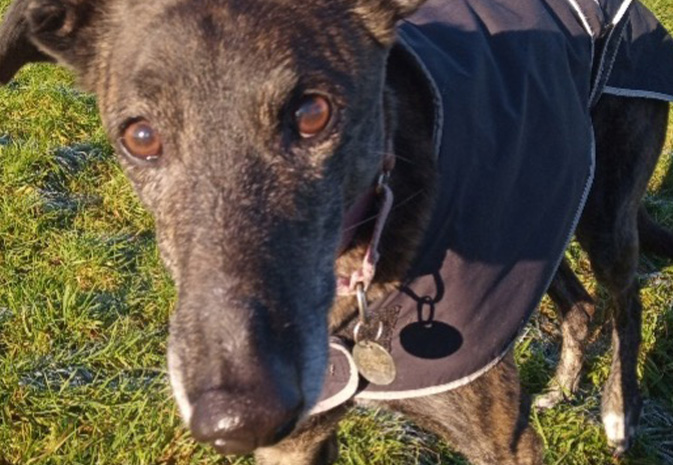Case Studies – Tilly
Tilly’s owners noticed the sudden appearance of a 3cm firm mass on the inside of her front leg, just above her carpus and presented her to us. It was necessary to take an incisional biopsy to determine the type of cells constituting the mass. The results showed Tilly had a Grade II Soft Tissue Sarcoma. With complete margins, the prognosis for Tilly would be good, however the positioning of tumour in a region with minimal “spare” or loose skin presented challenges to our team. The surgeon had to dissect the mass away from important structures in the limb – including the cephalic vein, ensure no sarcoma cells remained and encourage the healthy tissue to regrow and heal. An 8cm deficit on Tilly’s limb, as deep as the bone, was required to fully remove the tumour and reduce the risk of recurrence. Healing by secondary intention can occur, when the body grows new tissue from underneath the wound surface to close the deficit. Open wounds are particularly difficult to manage in animals, making them susceptible to infection and with lots of dressing changes necessary. After 12 days of careful protection of the limb and regular dressing changes, a healthy granulation bed had formed at the site.

Surgical site after the removal and debridement required to prevent tumour recurrence

12 days after surgery, following wound management dressing protocols
With a healthy base for the skin graft to adhere to, the deficit could then be filled with healthy skin taken from Tilly’s flank. With strict rest orders and controlled wound management, 80% of the graft had successful taken within two weeks. Tilly was successfully treated and had no open wounds in less than 6 weeks after the tumour removal.

The attachment of the skin graft with mesh stitching

The grafted skin successfully adhered, and no deficits remained

Tilly’s owner reports she is doing great. Look at her enjoying her walks!


